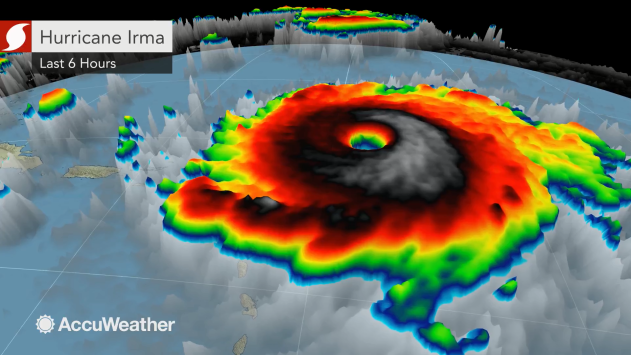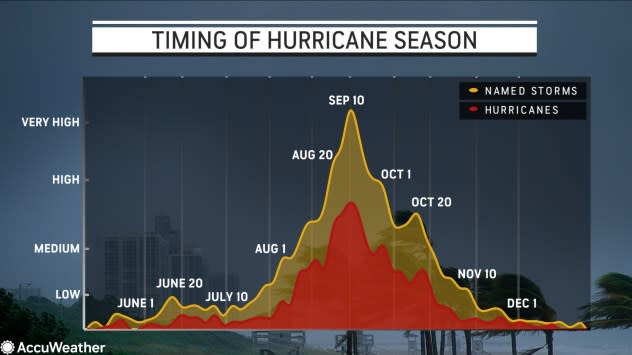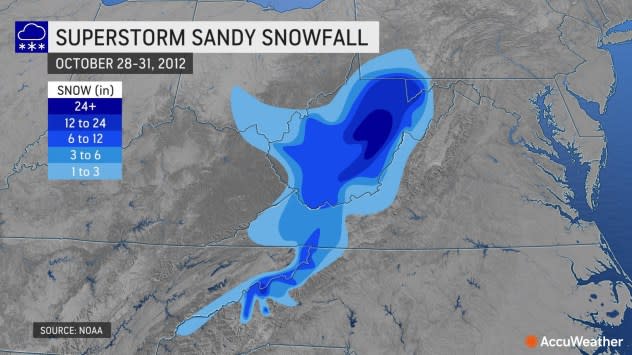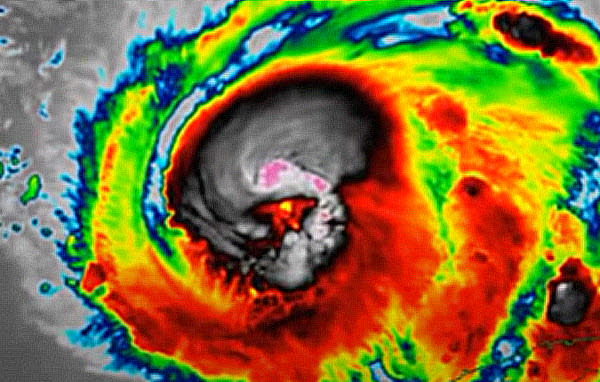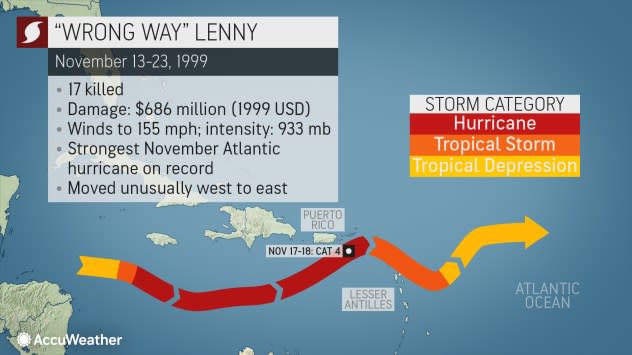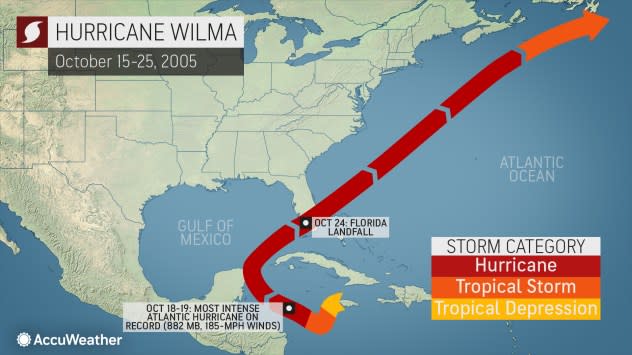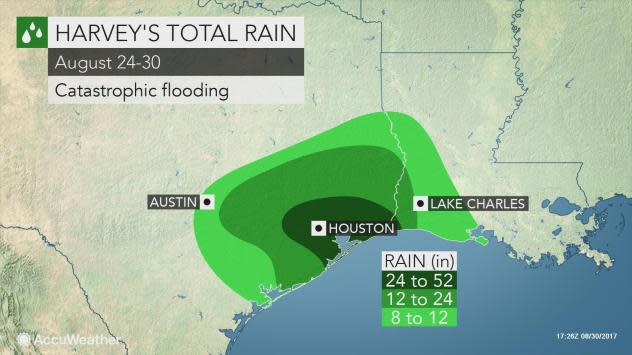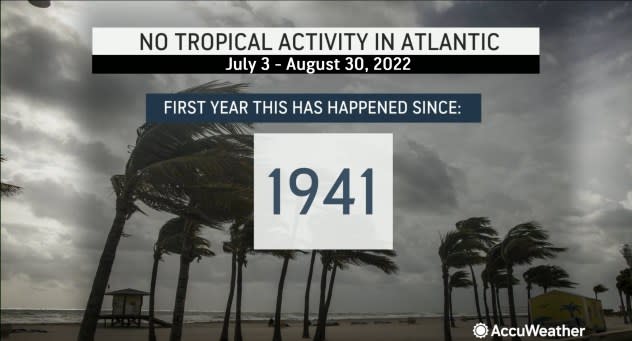50 hurricane facts that will blow you away
If you live near the coast, you probably hear the word hurricane mentioned ad nauseam each summer, but what is not as well known is the source. The origin of the word "hurricane" comes from the Taino Indigenous Caribbean word "hurakán," meaning evil spirits of the wind.
Hurricanes are defined as tropical cyclones with sustained wind speeds greater than 74 mph. There is also different terminology used across different parts of the world. In the western Pacific Ocean, tropical cyclones that reach hurricane strength are called typhoons. In the Indian Ocean and South Pacific, tropical systems are referred to as cyclones throughout their life cycle.
 |
Hurricane Irma on Infrared Satellite Sep. 5, 2017. |
Here are more obscure but fascinating hurricane facts to keep your water-cooler conversation fresh this season.
• The U.S. government routinely flies piloted planes and autonomous drones on reconnaissance missions into tropical storms and hurricanes for research purposes. The first recon flight into a hurricane occurred in 1943 during World War II.
 |
Researchers fly the Gulfstream jet, called ‘Gonzo,’ above the hurricane to measure key metrics to improve forecasts. |
• The Fujiwhara Effect occurs when two tropical cyclones spinning in the same direction "dance" around their common center. A recent example of this phenomenon included Tropical Cyclone Seroja and Odette off the coast of Australia in 2021.
• Hurricanes occur regularly in every basin except the South Atlantic and southeast Pacific, where wind shear, or winds that vary in strength or direction with altitude and disrupt tropical development, is too strong.
• Hurricanes routinely unearth shipwrecks and wash up strange items like buoy bombs and bananas. One of the most recent instances of a shipwreck appearing was after Hurricane Nicole struck Florida in the fall of 2022.
 |
An aerial view of the shipwreck uncovered near Daytona Beach, Florida, in 2022. (Photo/Tamra Malphurs) |
• The only hurricane on record in the South Atlantic basin made landfall in Brazil in 2004. USA Today reported the storm was called "Catarina," and it damaged more than 30,000 homes. The storm also killed three people.
• After Hurricane Ian impacted Florida in September 2022, Florida resident Joseph Cook began to search for treasure along the coast of St. Augustine. What Cook discovered was a huge, beautiful diamond ring worth $40,000. Cook immediately took to social media to try and find the ring's rightful owner.
 |
Joseph Cook recorded a TikTok video on Hammock Beach in St. Augustine that showed him holding a diamond ring worth $40,000 he had recently discovered. Cook later returned the ring to its rightful owners. (Joseph Cook) |
• An oft-told story that said only one out of two dozen people survived a "hurricane party" in an oceanfront building in Pass Christian, Mississippi, during Hurricane Camille in 1969 appears to be exaggerated. That legend was perpetuated by one of the six survivors until it was debunked in 2000 by the others.
• Scientists were able to send a drone directly into the eye of Hurricane Sam in 2021, recording wind gusts up to 91 mph and waves up to 42 feet in height. Not only that, it sent back incredible video.
 |
Footage gathered by a Saildrone uncrewed surface vehicle (USV) on Sept. 22, 2022, from inside Hurricane Fiona, a Category 4 hurricane, barreling across the Atlantic Ocean. (Courtesy Saildrone and NOAA) |
• Birds fly downwind in the gales that spiral into the center of a hurricane and can sometimes become "stuck" in the eye.
• Hurricane season in the Atlantic runs from June to November, but hurricanes have occurred every month of the year - except February.
 |
Peak Timing / Frequency of Hurricane Season |
• Cooler waters generally keep hurricanes from hitting the West Coast of the U.S. since hurricanes need warm water to thrive. However, hurricanelike storms moved over Long Beach, California, in 1939 and San Diego in 1858 before official record-keeping began.
• Hurricanes can, and do, cause snowfall in the mountains of the eastern United States when their moisture moves into cold enough air in the autumn season. Hurricane Wilma in 2005 and Hurricane Sandy in 2012 produced snowfall in this manner.
 |
Hurricane Sandy helped drop feet of snow over the Appalachians in 2012. |
• Ideas raised over time to prevent hurricanes include seeding clouds, bombing the storms and towing icebergs - none of which will work because the storms are too large and contain too much energy.
• Despite what you may see in movies or television shows, lightning is rare inside hurricanes, although any lightning in a hurricane's eyewall may indicate a strengthening storm. As Hurricane Ian strengthened off the west coast of Florida in October 2022, immense eyewall lightning was documented via satellite and was photographed by storm chasers for the first time.
Check out this visible satellite loop with frequent lightning in the eye wall of intensifying Hurricane Ian on approach to southwest Florida. Agitated thunderstorm tops and gravity waves ripping all over the place @ChrisFLTornado @accuweather @theScantman pic.twitter.com/AmqnVsGA8K
— Reed Timmer, PhD (@ReedTimmerAccu) October 11, 2022
Have the app? Unlock AccuWeather Alerts™ with Premium+
• Two hurricanes, Michael in 2018 and Matthew in 2016, went viral on social media because of their skull-like appearances on weather satellite photos.
 |
A skull-like face appears on a satellite image of Hurricane Michael on Oct. 9, 2018. (NOAA) |
• Hurricane Andrew made history on Aug. 24, 1992, as one of the strongest hurricanes to make landfall when it did so as a vicious Category 5 striking Miami, Florida. However, Andrew was almost known by a different name.
• Hurricane Katrina was the costliest hurricane on record when it came ashore in 2005. Katrina's storm surge was as high as 28 feet on the coast of Mississippi, where the most damage was done, but more than 1,000 people lost their lives in New Orleans when the levee system around the city failed.
• The longest-tracking tropical cyclone on record was Cyclone Freddy, which traversed the Indian Ocean for 37 days in early 2023. Freddy traveled more than 5,000 miles (8,000 km) from Indonesia to Africa before eventually wreaking havoc in Madagascar and Mozambique.
 |
Hurricane Freddy's track across the Indian Ocean from Feb. 3 to March 8, 2023. |
• Hurricane Floyd in September 1999 was famous for its flooding. More than a foot of rain in Virginia and North Carolina killed 3 million chickens and more than 30,000 hogs.
• Hurricane Leslie in 2018 had one of the most complex tracks, looping around almost three times in the North Atlantic before making landfall in Portugal, where it knocked down a quarter of a million trees.
 |
The track of Hurricane Leslie in 2018. |
• Worldwide, Typhoon Tip in 1979 holds the low-pressure record for hurricanes at 25.69 inches of mercury (870 millibars).
• "Wrong-Way Lenny" is a nickname for the strongest November Atlantic hurricane on record - which moved backward compared to almost every other storm on record (from west to east in the Caribbean), eventually striking Puerto Rico as a Category 4 storm.
 |
• The most tornadoes spawned by a single tropical cyclone was during Hurricane Ivan, which caused 120 twisters to touch down in 2013.
• In 2005, Hurricane Wilma became the most powerful Atlantic storm on record, with the lowest barometric pressure at 26.05 inches of mercury (882 millibars). At that location, east of Belize, it was also estimated to have sustained winds of 185 mph.
 |
Hurricane Wilma's track in 2005. |
• Hurricane Harvey dropped more than 60 inches of rain on Texas in August 2017, setting a new rainfall record for tropical cyclones in the U.S. and causing severe flooding. The entire Houston region was inundated by more than 2 feet of rain.
 |
Flooding from Hurricane Harvey in 2017. |
• There were zero tropical storms or hurricanes in the Atlantic basin during August 2022, the first time since researchers began using satellites to observe storms in 1967, and there was also no activity between July 3 and Aug. 30, for the first time since 1941.
 |
No Tropical Activity July 3 - Aug 30, 2022, a record since 1941. |
• Hurricane Katrina and Hurricane Harvey are tied as the most expensive hurricanes to hit the United States, according to NOAA. Total damage costs were $125 billion for each of these devastating storms.
• Google's highest search traffic numbers since 2004 for the term hurricane spiked in September 2017. That month, Hurricane Irma hit the United States, then Hurricane Maria devastated Puerto Rico. Hurricane Irma was the number one search term for all of 2017.
• There have been as many as four hurricanes in the Atlantic basin concurrently. This happened in 1893 and 1998.
• Jupiter has a hurricanelike feature called "the big red spot," which has been active for over 300 years, rotates at 400 mph and is bigger than the Earth. But, it's rotating counterclockwise and is technically a high-pressure system, not a low-pressure system like a hurricane.
 |
Citizen scientists Gerald Eichstädt and Seán Doran processed this image of Jupiter's Great Red Spot using data gathered by NASA's Juno spacecraft on April 1, 2018. (NASA/Gerald Eichstädt /Seán Doran/NASA/JPL-Caltech/SwRI/MSSS) |
• In 2019, AccuWeather announced the RealImpact™ Scale for Hurricanes. Unlike the Saffir-Simpson scale, which has been used by meteorologists for decades but classifies storms by wind speed only, this innovative scale is based on a broad range of important factors, including storm surge and flooding. The six-point scale ranges from "1 to 5" and also includes a "Less than 1" rating.
• According to the University of Utah, a large hurricane releases the energy of 10 atomic bombs every second. The heat generated by the average hurricane is equivalent to a 10-megaton nuclear bomb exploding every 20 minutes, NOAA reported.
• The energy used by the entire human race up to 1990 was only 20% of the power in the average hurricane.
• The countries that have experienced the most landfalls of tropical cyclones equivalent to hurricane strength in the satellite era, which spans the last 50 years, are China, the Philippines, Japan, Mexico and the United States.
• In 1772, Alexander Hamilton, a 17-year-old office clerk at the time, wrote a detailed account of a hurricane that struck St. Croix in the Caribbean. Locals were so impressed with his writing that they sent him to the U.S. mainland, where he joined George Washington's staff then played a crucial role in ratifying the U.S. Constitution.
 |
This is an undated photo of an etching of Alexander Hamilton (AP Photo) |
• Communities named Hurricane exist in Alabama, Kentucky, Missouri, North Carolina, Utah, West Virginia and Wisconsin. A mountaintop in Washington state is also named Hurricane Ridge.
• Bob Dylan's 1975 song titled "Hurricane" is a protest song against the arrest and imprisonment of boxer Rubin "Hurricane" Carter, who Dylan believed was wrongfully convicted of murder. The song spent 11 weeks on Billboard's Hot Top 100 chart.
• An aspiring young reporter working for a small TV station in Houston achieved fame after being the first to broadcast a weather radar image showing a tropical storm during Hurricane Carla in 1961. That reporter would go on to host the CBS evening news. His name? Dan Rather.
 |
Radar Loop of Hurricane Carla was broadcast for the first time. (NOAA) |
• One of the earliest references to the powerful storms - now called hurricanes - is "The Tempest" by William Shakespeare, a play inspired by a hurricane in 1609 in Bermuda.
• A surprise hurricane nearly killed iconic Hollywood actress Katharine Hepburn in 1938. Weather forecasting wasn't what it is today, leading to many, including Katharine Hepburn, being caught off-guard by a hurricane. Initially, the cyclone was forecast to make landfall in Florida. Hepburn, her mother and their maid fled from their flooded house during the height of the storm to find a working phone.
 |
Screen actress Katharine Hepburn is shown in the 1940 film "The Philadelphia Story." (AP Photo) |
• There have been six films in the last 100 years titled "Hurricane" or "The Hurricane."
• One of the most famous sports teams containing "hurricane" is the Carolina Hurricanes, a National Hockey League team in Raleigh, North Carolina. The Carolina Hurricanes hockey team was named one year after hurricanes Bertha and Fran devastated eastern North Carolina in 1996.
 |
Carolina Hurricanes' Stefan Noesen (23) skates against the Florida Panthers during the first period of Game 1 of the NHL hockey Stanley Cup Eastern Conference finals in Raleigh, N.C., Thursday, May 18, 2023. (AP Photo/Karl B DeBlaker) |
• Also famous in the world of sports: The University of Miami Hurricanes. The school's athletic programs are perhaps best defined by its legendary football team, which has won five national titles. The teams were named after the Great Miami Hurricane, which hit the city as a Category 4 storm on Sept. 18, 1926.
• Hurricanes, the cocktail drinks, were first named in 1938 at Pat O'Brien's bar in New Orleans. It was so named because the glass it was served in resembled a hurricane lamp. While a hurricane lamp does protect a candle from high winds, the etymology of its name is more complicated.
• Bands named "(The) Hurricane(s)" hail from the United States, Serbia, Britain and Australia.
• One of the most famous song titles containing the word "hurricane" is "Rock You Like a Hurricane," released by the band Scorpions in 1983.
Want next-level safety, ad-free? Unlock advanced, hyperlocal severe weather alerts when you subscribe to Premium+ on the AccuWeather app. AccuWeather Alerts™ are prompted by our expert meteorologists who monitor and analyze dangerous weather risks 24/7 to keep you and your family safer.


